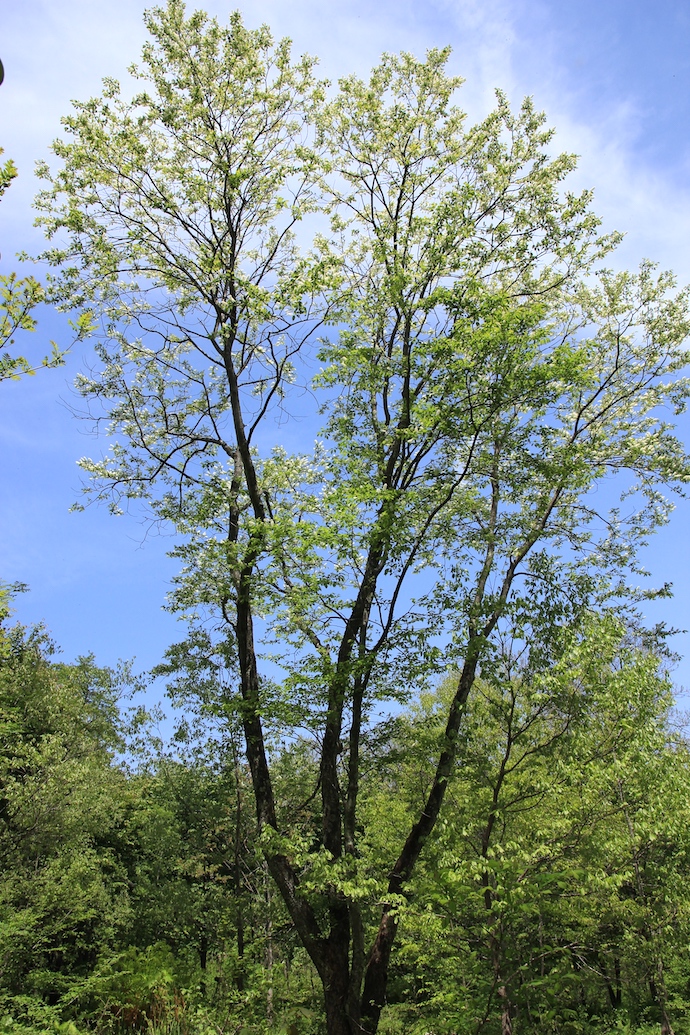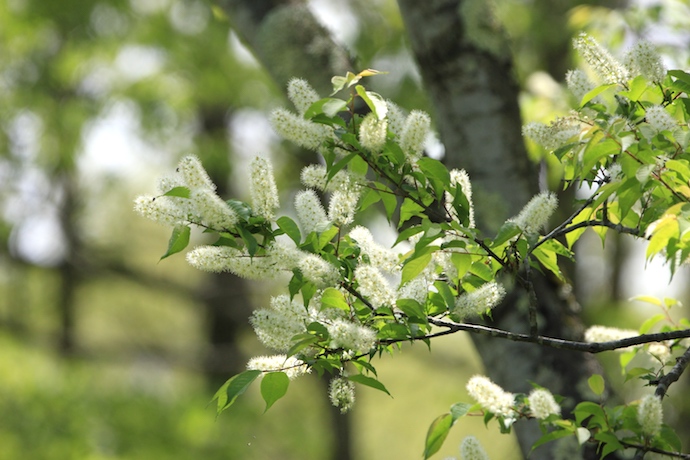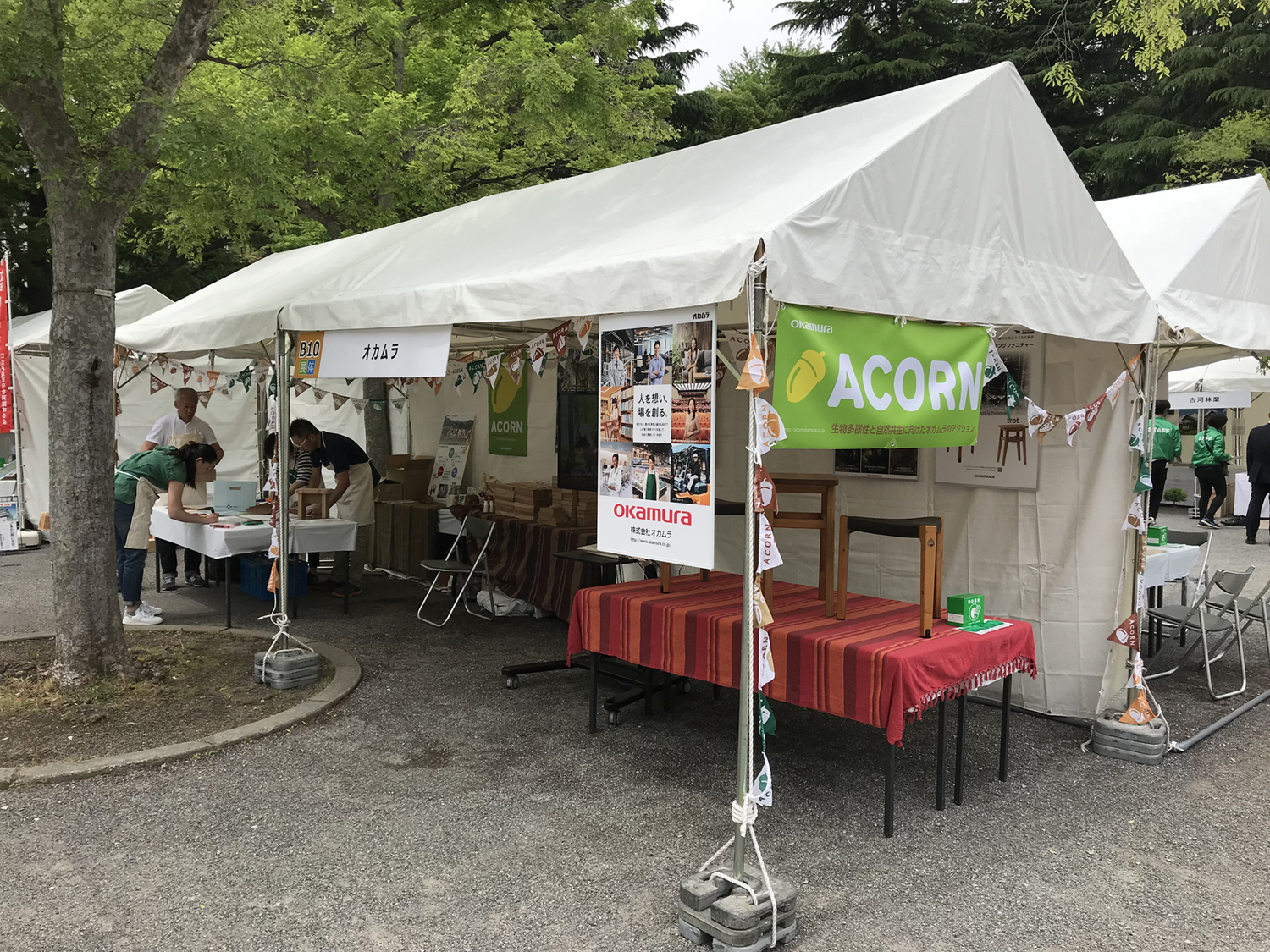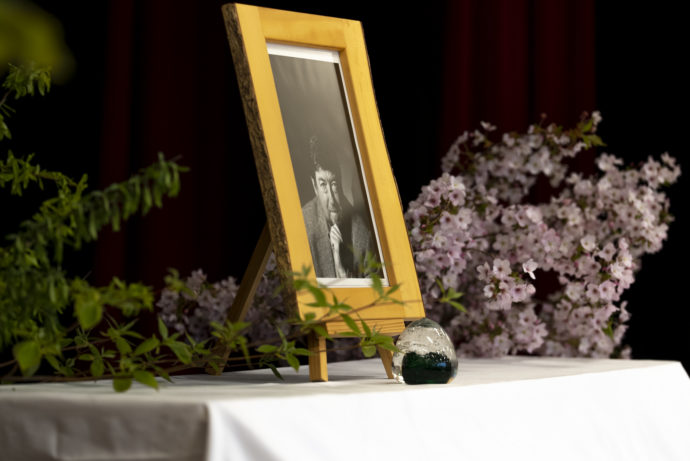Column
【赤鬼のつぶやき C.W.ニコル】ウワミズザクラ(Prunus grayana )

長野県の北部へ引っ越して来て、この木をはじめて知りました。地域ではおなじみの樹種で、アファンの森にもあります。科学的な名前はPrunus grayanaで、英語ではジャパニーズ・バード・チェリーとも呼ばれ、西欧では観賞用の庭園の植栽に使われています。
この辺りで見かけるのは5から8メートルほど、ほっそりとした、なめらかでグレーがかかった紫色の幹です。大きくなると8から20メートルほどに成長すると言われています。
葉は桜の仲間とよく似ています。でも花は、一見すると桜とはまったく似ていません。親指くらいの大きさで総状花序になっている小さな白い花は、愛らしく良い香りがして、7から10ミリメートルくらいの丸い形に5枚の花びらが並んで咲いています。私たちが暮らしている地域では、ヤマザクラから2、3週間遅れてこの花が開きます。雌雄同体なので、こんなに小さな花にも雌しべと雄しべがあり、昆虫が受粉を媒介します。

やがて小さなサクランボが実ります。最初は緑色、赤く変わって、熟すると黒色になります。焼酎や泡盛に漬けても美味しいと友人から聞いたことがありますが、まだやってみたことがありません。果実も種子も食用になり、昔は塩漬けにしていたこともあったそうです。森の恵みはたいてい試して来ましたが、この塩漬けはまだ未体験のもののひとつです。ヨーロッパの専門家のなかにはこの実に毒があると言っている人もいて、それでも日本ではずっと口にされてきているうえ、一度にたくさん食べるものでもないので、心配はしていません。(ワラビも毒があると言われていますが、春になるとみんな食べていますし、これまで一度も問題はなかったです。)
材は硬く、にもかかわらず、簡単に木目に沿って割れてしまいます。棚や木版印刷の版木、道具の持ち手などに加工されます。樹皮と根が緑色の染料にもなります。小さな木ですが、わたしのお気に入りの樹のひとつです。来年は忙しくなりすぎてしまう前に、焼酎か泡盛でウワミズザクラ酒に挑戦してみないといけませんね!
C.W.ニコル
2018年5月
写真提供:C.W.ニコル・アファンの森財団
ACORN SERIES
UWAMIZU SAKURA(Prunus grayana )
I did not know this tree before I came to live here in northern Nagano. It is quite common in our area and we have it in our Afan woods. Uwamizu sakura is in the cherry family. Its scientific name is Prunus grayana. In English it is also called ‘Japanese bird cherry’ and is quite popular with ornamental gardens in the west.
Uwamizu sakura can grow 8 to 20 metres, although the ones we see around here are small (5 to 8 metres) with slender, smooth, greyish purple bark.
The leaves look like other cherry tree leaves, but the flowers, at first glance, are quite different. The tree blossoms after the leaves, with lovely racemes – thumb-sized clusters of tiny, fragrant white flowers about 7 to 10 millimeters in diameter, each little flower having five little petals. In our area they bloom two or three weeks after the mountain cherries. These little flowers are hermaphrodite; they have both male and female parts. They are pollinated by insects.
These flowers produce tiny cherries that are first green in colour, turning red, then finally black. Friends tell me that if you soak the flowers in shochu or awamori you get a good taste, but I haven’t tried it so far. The fruit and seeds are also edible, and are traditionally salted. This is one of the few forest foods that I have yet to try. Some western authorities claim that the fruit and seeds are toxic, but as it is a traditional food in Japan, and only eaten in very small quantities, so I wouldn’t worry about it. (Some people claim that warabi (bracken tips) but we eat them regularly in spring and have had no trouble.)
The wood is hard but easily split. It is used for cabinet making, printing blocks, tool handles and so on. Bark and roots can be used to produce a green dye. It is a small tree, but one of my favorites. I’ll have to try that shochu or awamori uwamizu drink, maybe next year before we get too busy!
C.W. Nicol
May 2018
C.W.ニコル
作家・1940年イギリス南ウェールズ生まれ。1995年日本国籍取得。カナダ水産調査局北極生物研究所の技官・環境局の環境問題緊急対策官やエチオピアのシミエン山岳国立公園の公園長など世界各地で環境保護活動を行い、1980年から長野県在住。1984年から荒れ果てた里山を購入し「アファンの森」と名づけ、森の再生活動を始める。2005年、その活動が認められエリザベス女王から名誉大英勲章を賜る。2011年、2016年に天皇、皇后両陛下がアファンの森をご視察された。






